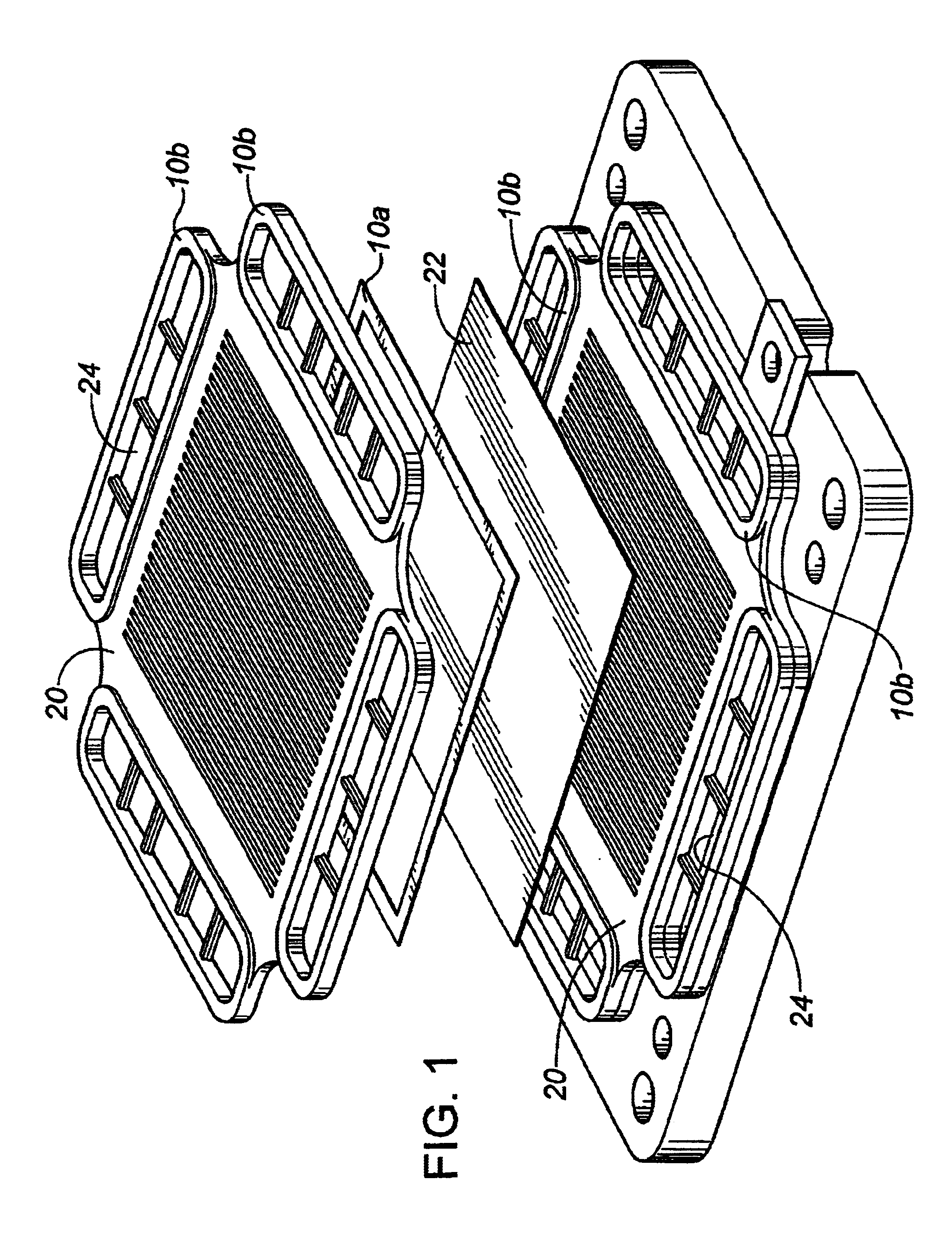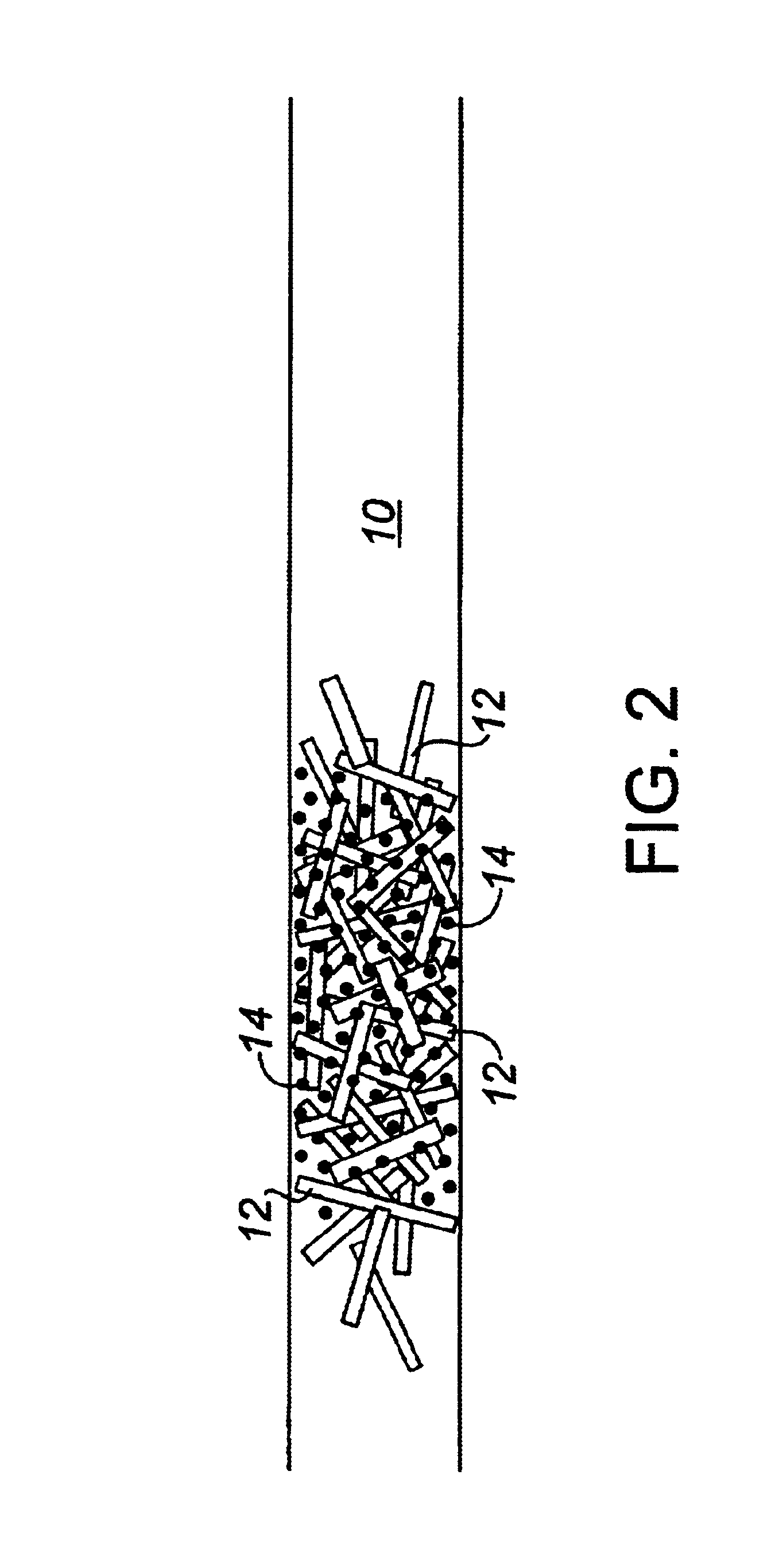High temperature gas seals
a gas seal and high temperature technology, applied in the field of high temperature gas seals, can solve the problems of stress, brittle gas tight seal, and disadvantages of conventional sealing methods for use in planar sofc stacks
- Summary
- Abstract
- Description
- Claims
- Application Information
AI Technical Summary
Benefits of technology
Problems solved by technology
Method used
Image
Examples
Embodiment Construction
[0019]The present invention provides for a flexible seal suitable for use in a solid oxide fuel cell operating in excess of 600° C. and which experiences thermal cycling. When describing the present invention, the following terms have the following meanings, unless indicated otherwise. All terms not defined herein have their common art-recognized meanings.
[0020]The term “ceramic” refers to inorganic non-metallic solid materials with a prevalent covalent or ionic bond including, but not limited to metallic oxides (such as oxides of aluminium, silicon, magnesium, zirconium, titanium, chromium, lanthanum, hafnium, yttrium and mixtures thereof) and non-oxide compounds including but not limited to carbides (such as of titanium, tungsten, boron, silicon), silicides (such as molybdenum disicilicide), nitrides (such as of boron, aluminium, titanium, silicon) and borides (such as of tungsten, titanium, uranium) and mixtures thereof; spinels, titanates (such as barium, lead, lead zirconium ti...
PUM
| Property | Measurement | Unit |
|---|---|---|
| Particle size | aaaaa | aaaaa |
| Particle size | aaaaa | aaaaa |
| Particle size | aaaaa | aaaaa |
Abstract
Description
Claims
Application Information
 Login to View More
Login to View More - R&D
- Intellectual Property
- Life Sciences
- Materials
- Tech Scout
- Unparalleled Data Quality
- Higher Quality Content
- 60% Fewer Hallucinations
Browse by: Latest US Patents, China's latest patents, Technical Efficacy Thesaurus, Application Domain, Technology Topic, Popular Technical Reports.
© 2025 PatSnap. All rights reserved.Legal|Privacy policy|Modern Slavery Act Transparency Statement|Sitemap|About US| Contact US: help@patsnap.com



